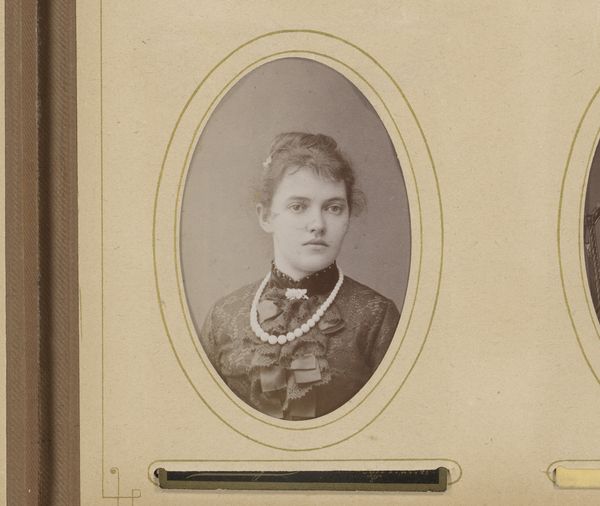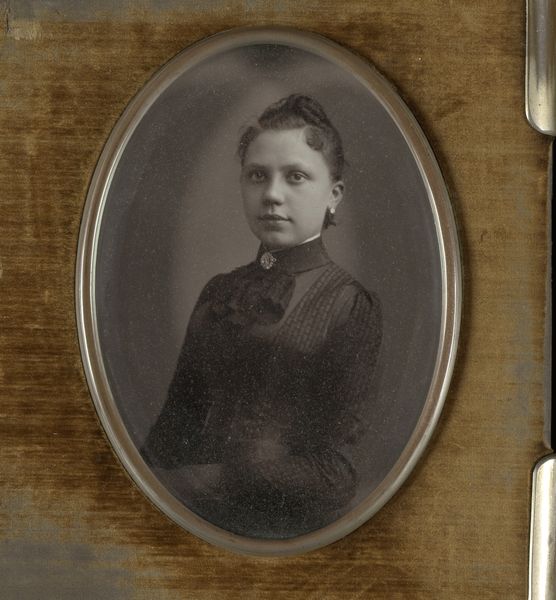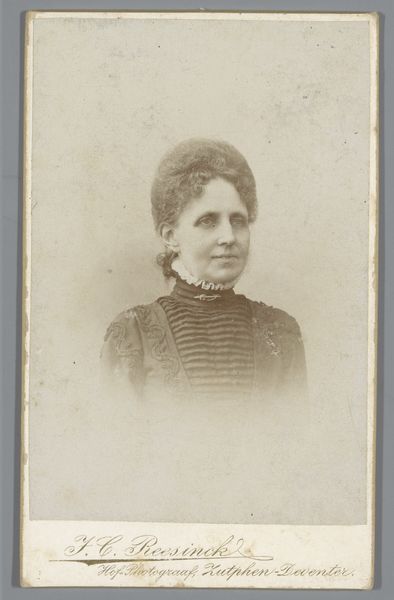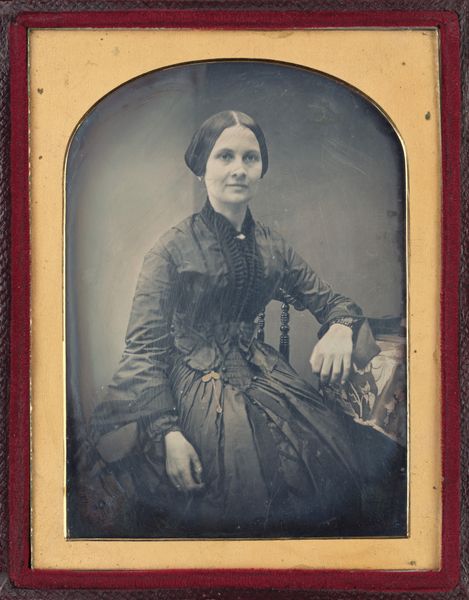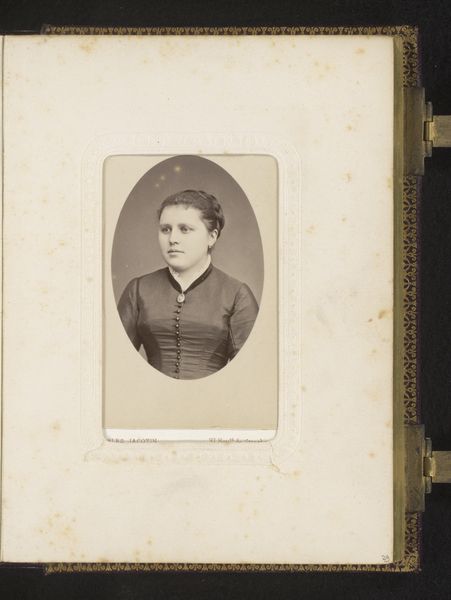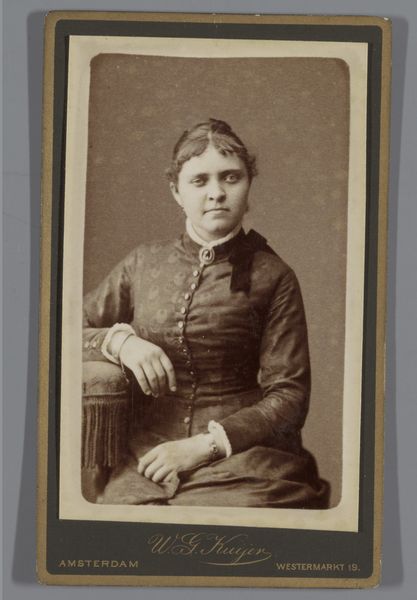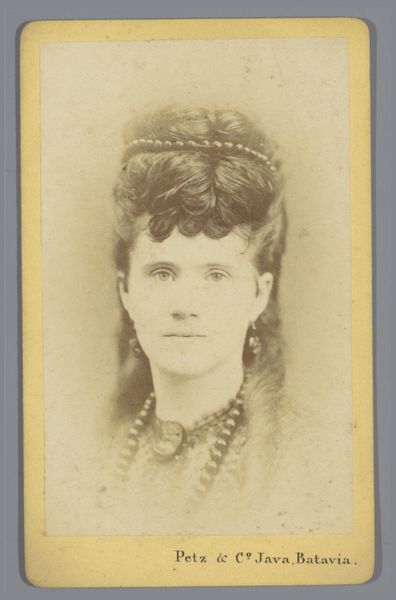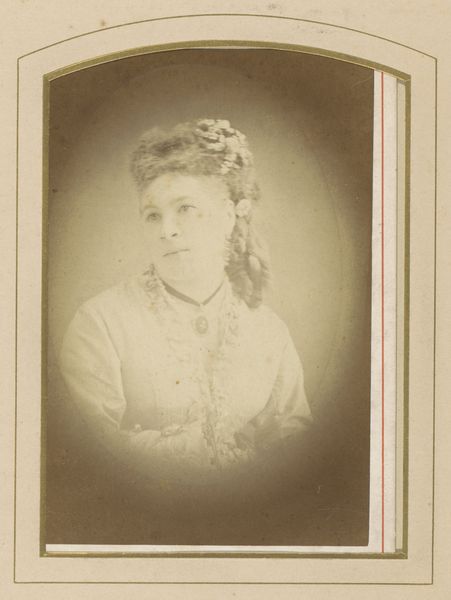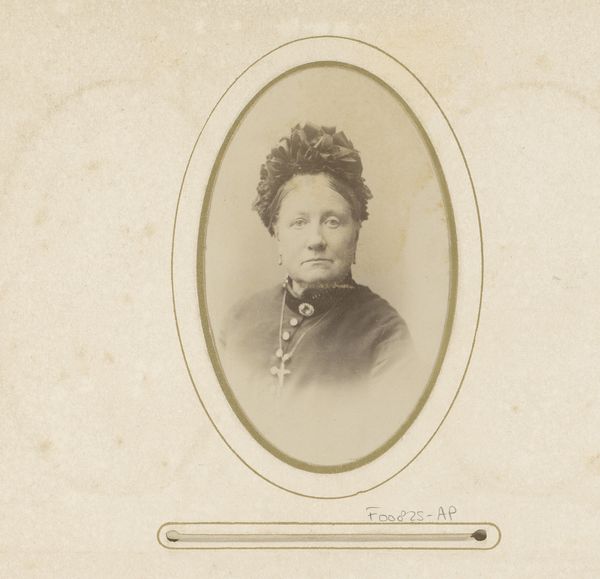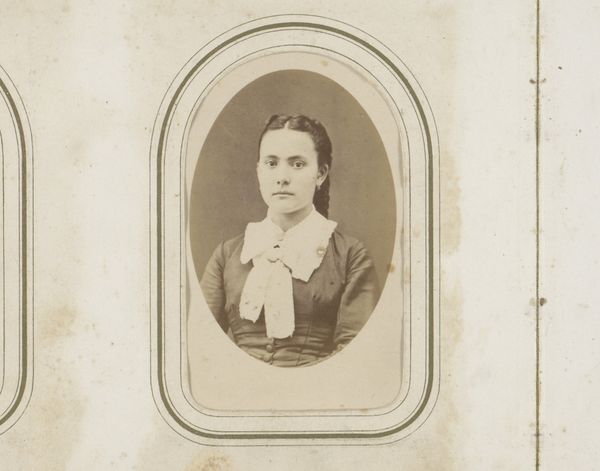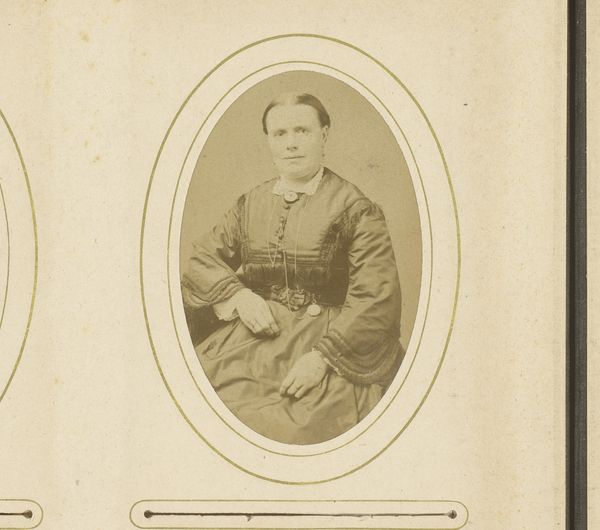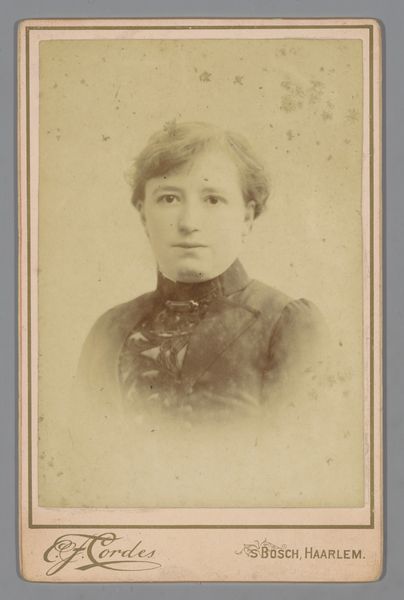
Dimensions: height 134 mm, width 96 mm
Copyright: Rijks Museum: Open Domain
Curator: Looking at this photograph, I feel immediately drawn in by its somber beauty. It evokes a sense of melancholy and quiet strength. Editor: Indeed. This is “Portret van een vrouw,” by Paul Joseph Nicolas Nestor Schaffers, created sometime between 1875 and 1896. The photograph’s presentation—that oval frame, the material used—gives the portrait a specific, almost handmade, quality. I’d argue that the framing is almost as integral to the final image as the subject. Curator: Absolutely. The sitter's reserved pose and simple attire invite us to contemplate the role of women in that era and their limited access to self-expression. The historical context is palpable, highlighting the intersection of gender and societal expectations. I am especially drawn to the subtle ways in which she asserts agency despite these limitations. Look closely, you can almost see a hint of defiance in her expression. Editor: It is fascinating how the choice of photographic medium speaks to wider socio-economic dynamics too. Was photography accessible to many people during that period? The material process suggests deliberate commissioning. Considering the level of work involved, the time needed, this isn’t just a snapshot. Think about who she might be, how much that portrait would cost her family at the time. This makes it clear it was only possible for women in a very limited class. Curator: Precisely. It begs the question: who was she, and what stories did she carry? This image makes me want to unpack not only the aesthetics, but also the economic realities that enabled her representation, making her visible, and embedding her narrative into a visual culture largely dominated by men. Editor: Her very appearance—the dress, the hair—speaks volumes. The subtle details of its construction and the fabrics used surely indicate class, perhaps aspirations. This links directly into the historical framework—the industrial labor practices producing those goods, the networks of trade… all material forces at play in that image. Curator: It serves as a powerful reminder of the intertwined layers of history, identity, and representation—offering a window into a complex social tapestry. Editor: I agree. It’s interesting to trace it back and see all of that layered into one simple, seemingly straightforward, image.
Comments
No comments
Be the first to comment and join the conversation on the ultimate creative platform.
